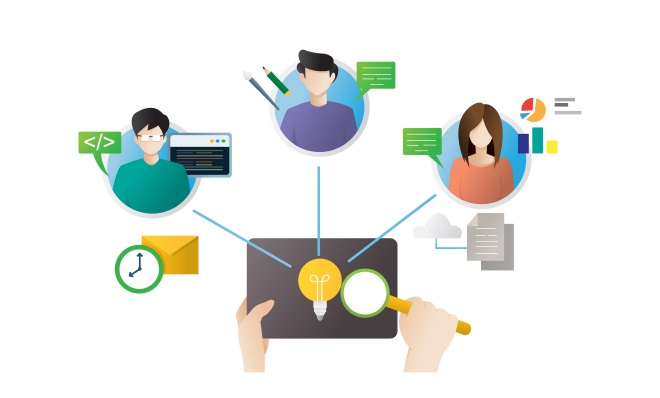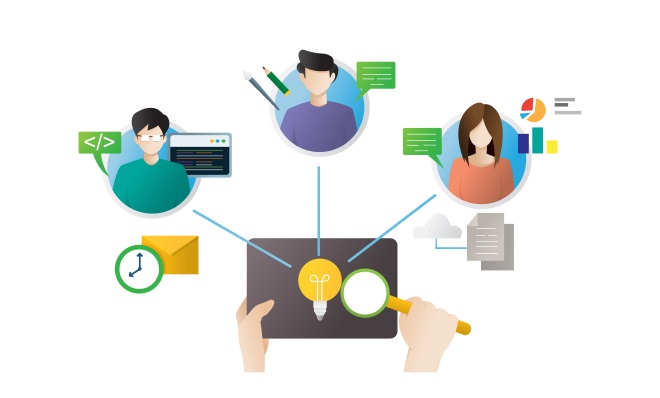Ensure that your data is easily accessible for your employees and protected from hackers
In one month, your company’s entire operational structure has had the rug ripped out from under it.
Your team is now (or soon will be) working remotely to protect your staff and clients from the spread of COVID-19 and to ensure your business is in compliance with the constantly evolving list of local and federal government regulations.
You dread checking your email. You keenly feel the responsibility of taking care of your employees, and you’re desperately trying to maintain strong connections with your customers.
If you feel like you’ve been hit by a tidal wave of change, you’re not alone! For the first time in over 100 years, businesses and individuals all over the world have had to instantly adapt to a global pandemic.
And now that you’ve pulled together a remote environment for your staff, you need to make sure your company information is both safe and accessible.
That’s why we’ve written this post. Here, we outline the three essential components your company needs for remote data security that will allow you to breathe a sigh of relief while you keep your company thriving.
Let’s get started!
Remote Data Security Best Practices

Here are four best practices we highly recommend, and we encourage you to empower your team in becoming comfortable with these protocols:
-
Create a VPN (virtual private network)
Creating a virtual private network protects your data as it’s being shared through your most critical remote asset — your WiFi network.
VPNs are often created for employees using unsecured public WiFi networks, like those in coffee shops, etc. Though that won’t be taking place in our current global circumstances, protecting your home networks will become paramount as cyber attackers run out of public WiFi access points.
To set up a VPN for Windows, check out one of our previous articles. Apple also has this helpful article for setting up a VPN on MacBooks. And remember, if you need help at any point, feel free to contact us!
-
Create strong passwords
This is a best practice for anything requiring a password, including WiFi networks, device login information, and accounts for any and all programs. Strong passwords include a string of randomized numbers, letters, and symbols, and can be securely saved (and generated) via trusted programs like LastPass.
This is also something to keep in mind while password protecting documents, which we’ll walk through in the File Access, Storage & Sharing section below.
-
Use two-factor authentication (if possible)
Two-factor authentication is a great remote data security tool that specifically protects against compromised passwords.
We’ve written this blog post on two-factor authentication, specifically in regards to ransomware protection, and it’s a great reference for what the set up entails for your business.
-
Moving your work to the cloud
Lastly, if you haven’t already done so, we recommend moving physical data to the cloud to make required documents accessible and secure.
We know this may sound like an obvious step for remote work environments, but many companies are still wary of uploading sensitive data to cloud servers. For more detailed information on creating and securing a cloud server for your business, see our blog post here.
Communication & Collaboration

Here is the secure and convenient communication/video conferencing software we recommend:
- Microsoft Teams has video conferencing, chat, file storage and Office Suite integration all in one convenient place, though some features are reserved for its premium version. However, the free version of Microsoft Teams still has a lot of essential office functionality, and Microsoft recently waived the 300 user restriction so you can have an unlimited number of users for free! (Thanks, Microsoft!)
- Slack also has videoconferencing, chat and file-sharing capabilities, though storage options are limited with the free version.
- Google Hangouts & Zoom are two additional video conferencing tools with free and premium options for your business.
File Access, Storage & Sharing
And finally, we arrive at the remote data security stage of protecting your company’s most vulnerable assets: the files, documents, and data you and your employees are sharing!
Accessing files:
Most likely, your company uses components of the Microsoft Office suite such as Word, Excel, etc., on a daily basis. But, if those applications are only on devices in the office, you need to be sure your employees can access them at home on their personal or portable work devices.
Thankfully, Microsoft is generously offering the basic version of their Office 365 enterprise suite for free for six months during this crisis, which will come with the additional bonus of the premium version of Microsoft Teams!
Google also offers Google Docs and Google Sheets as free Word and Excel alternatives that are easily accessible from any device. Employees can choose who has access to a specific document, and how much access they have, (for example, viewing vs. editing capabilities).
Storing & Sharing Files:
When it comes to saving and sharing documents created on these applications, we have two main recommendations:
- Password-protecting sensitive documents. Luckly, this is incredibly easy for Microsoft Office suite applications. In the document you wish to password protect, head to: File tab > Info Tab > Protect Document > Encrypt with Password. And just like that, your document’s password-protected!
- Use secure file storage and sharing software, such as OneDrive or Sharepoint, Microsoft’s file storage and sharing applications. Google Drive is another example of a secure and user-friendly file storage and sharing software.
We truly hope these recommendations are helpful for your business, because we want to see it thrive remotely during this global crisis. So, in addition to this blog post, we’ve put together a free Work-From-Home checklist so your business is set up for success.
And please, if you have any questions or need additional help in creating a safe, effective work-from-home environment, contact Varay today!




